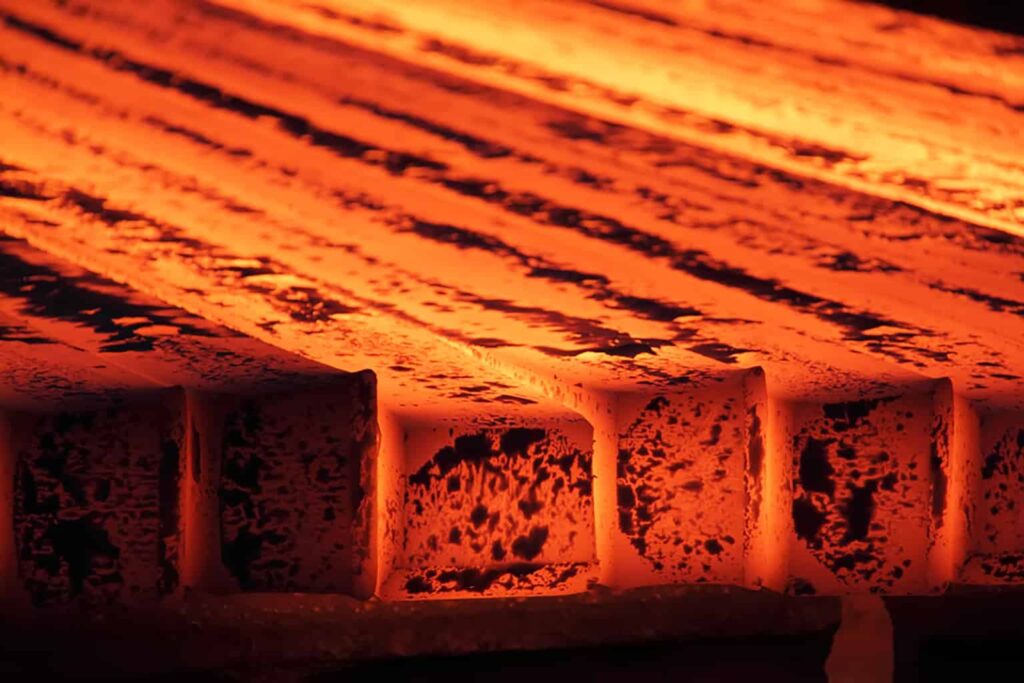Introduction
In metal fabrication, achieving the right balance between strength and flexibility is critical to ensure components perform reliably under stress while remaining manufacturable. One of the most effective ways to achieve this balance is through heat treatment. By carefully controlling temperature cycles, metalworkers can tailor mechanical properties such as hardness, ductility, toughness, and fatigue resistance.
This blog explores the principles, processes, and applications of heat treatment in modern fabrication, highlighting how it helps manufacturers deliver high-performance parts for demanding industries such as aerospace, automotive, and medical devices.
What Is Heat Treatment?
Heat treatment is a controlled thermal process used to alter the physical (and sometimes chemical) properties of metals. The process involves heating, soaking, and cooling metals under defined conditions to achieve specific performance goals, such as:
- Increasing hardness and wear resistance
- Improving flexibility and ductility
- Reducing internal stresses from prior machining or welding
- Enhancing fatigue strength for cyclic loading conditions

Common Heat Treatment Processes
| Process | Purpose | Typical Application | Resulting Properties |
|---|---|---|---|
| Annealing | Softens metal, improves ductility, relieves stress | Sheet metals, deep-drawn components, welded structures | Softer, more formable, improved machinability |
| Quenching | Rapid cooling to increase hardness | Cutting tools, gears, high-strength fasteners | High hardness, but increased brittleness |
| Tempering | Reheating quenched metal to reduce brittleness | Automotive springs, shafts, structural steel parts | Balanced toughness and hardness |
| Normalizing | Refines grain structure, relieves stress | Pressure vessels, automotive frames, aerospace parts | Improved strength, toughness, dimensional stability |
| Case Hardening | Hardens surface layer while maintaining ductile core | Bearings, cams, gears, wear-resistant machine parts | Hard outer shell with tough, flexible inner core |
Benefits of Heat Treatment in Fabrication
- Optimized Strength-to-Flexibility Ratio – Metals can be hardened for strength while retaining enough ductility to avoid catastrophic failure.
- Improved Wear Resistance – Surfaces exposed to friction gain durability, reducing downtime and maintenance costs.
- Enhanced Machinability – Processes like annealing make materials easier to cut, bend, and form.
- Stress Relief – Post-weld heat treatment prevents cracking and distortion in complex assemblies.
- Extended Component Life – Fatigue resistance improves significantly, especially for cyclic load applications.
Industry Applications
- Aerospace – Heat treatment ensures turbine blades and structural components withstand extreme thermal and mechanical loads.
- Automotive – Gears, crankshafts, and suspension components undergo quenching and tempering for durability.
- Medical Devices – Surgical tools and implants are heat-treated to combine hardness with corrosion resistance.
- Energy Sector – Pipelines and pressure vessels benefit from normalizing and stress-relief heat treatment.
Challenges and Considerations
While heat treatment offers significant advantages, it requires strict process control:
- Temperature Precision – Even slight deviations can result in undesired microstructures.
- Distortion Risks – Rapid quenching may warp thin or complex parts.
- Material Variability – Different alloys respond uniquely, requiring tailored heat treatment cycles.
- Energy Consumption – Furnaces and quenching systems consume substantial energy, raising sustainability concerns.
Conclusion
Heat treatment is a cornerstone of metal fabrication, enabling manufacturers to fine-tune materials for strength, flexibility, and long-term reliability. By selecting the right process—whether annealing, quenching, tempering, or case hardening—fabricators can optimize parts for performance, cost-efficiency, and safety.
As industries evolve toward lightweight designs, higher-performance alloys, and sustainability, advanced heat treatment techniques will continue to play a crucial role in delivering high-precision, reliable components.
What We Offer at Ze-tech Mold
At Ze-tech Mold, we provide end-to-end manufacturing services, including:
- CNC Machining & Turning
- 3D printing prototype
- sheet metal fabrication
- silicone vacuum casting
- Rapid Injection molding
- surface treatments
- PCB & PCBA
Whether you’re looking for precision CNC parts or custom prototypes, we provide tailored solutions for both low-volume and large-scale production. Get in touch with us today to discuss your project and see how we can bring your ideas to life.
